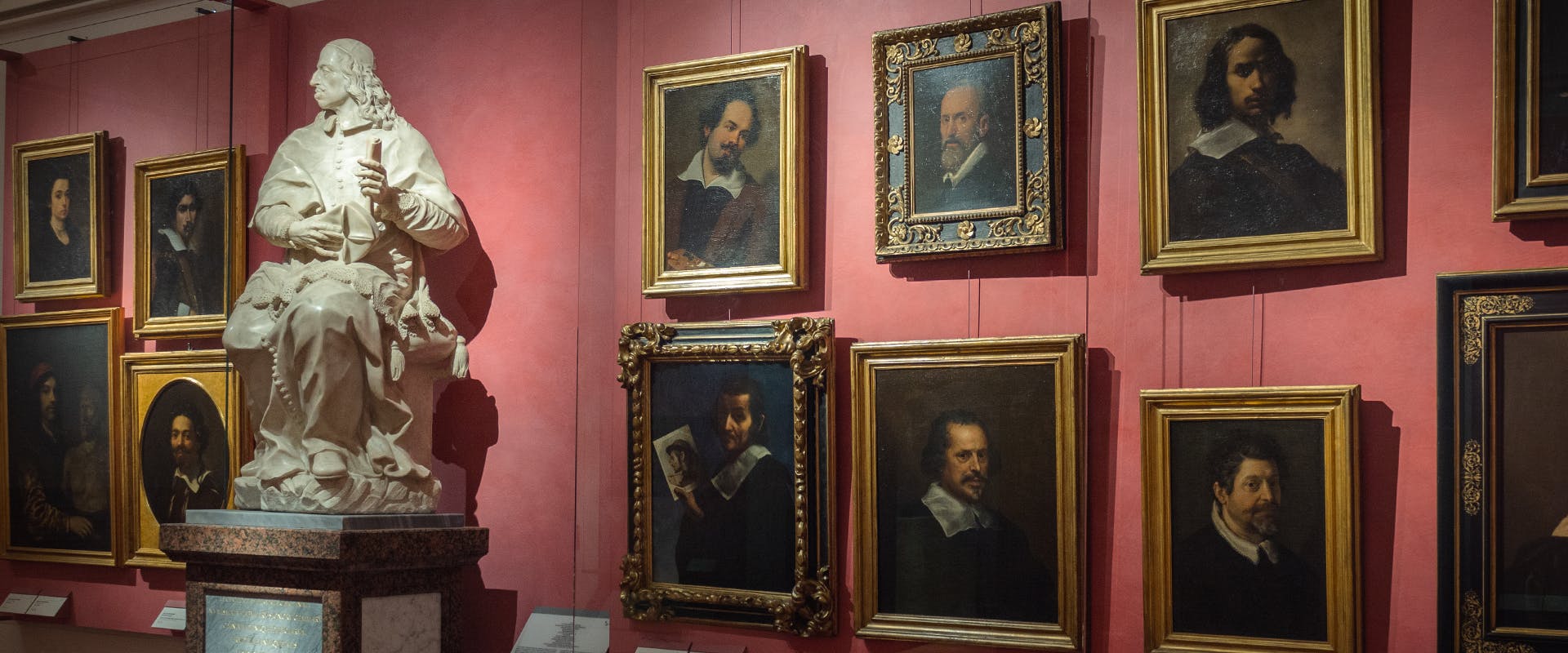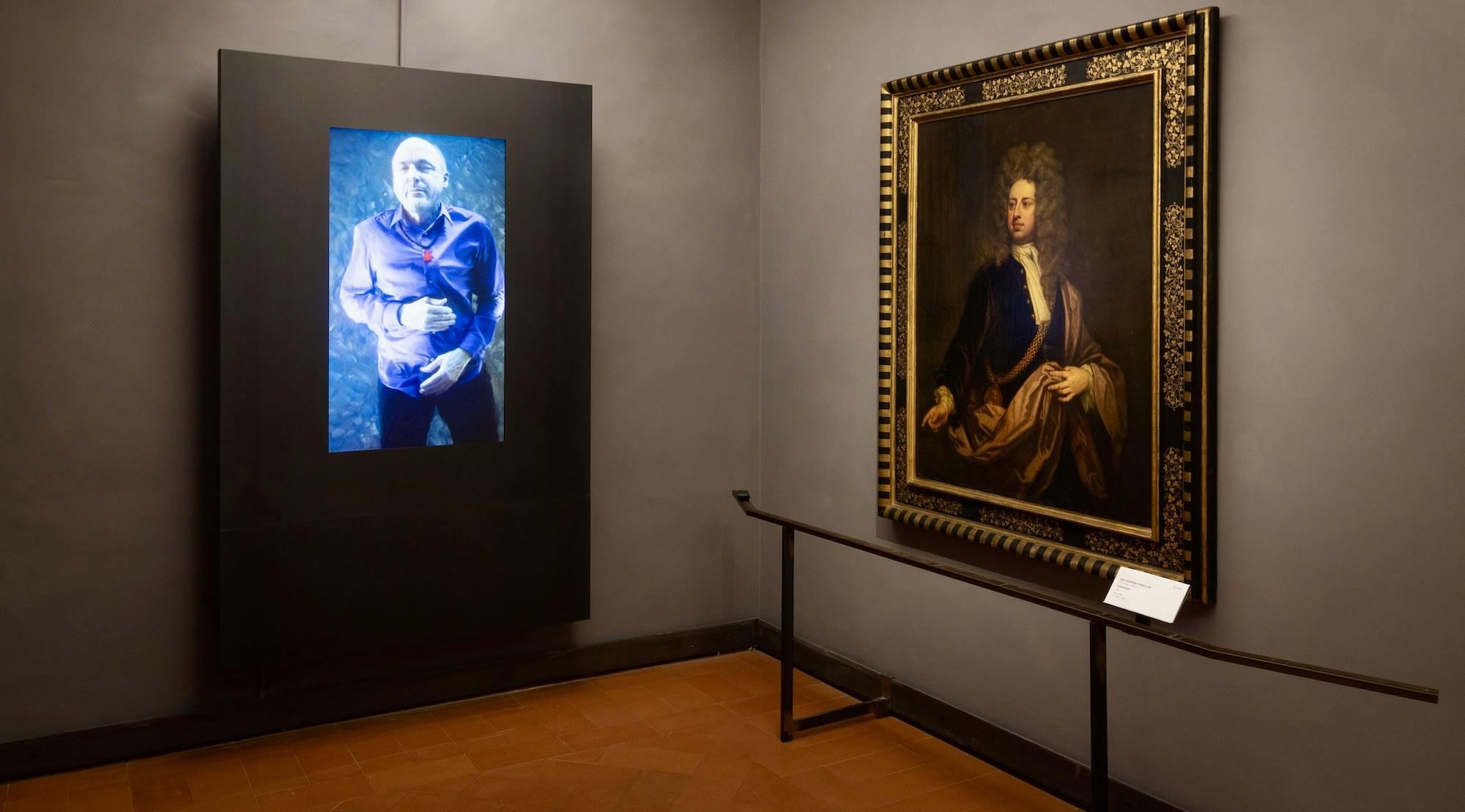The Uffizi Self-portraits
The stunning collection now permanently on view: 12 rooms for 255 works and 600 years of art history, from Taddeo Gaddi to Yan Pei-Ming.
Director Eike Schmidt: "The exhibition was made possible thanks to the donation of one and a half million euro by the Pritzker family; in the rooms where artists and craftsmen worked since the 16th century, the many protagonists of that same art that can be admired in the Uffizi and Palazzo Pitti now live again".
Cardinal Leopoldo de' Medici in the 17th century started the collection, never interrupted and still increasing. It is the largest, oldest and most important collection of selfportraits in the world: over 2000 paintings, sculptures and drawings. The rooms of the new exhibition, on the first floor of the Gallery, are bright pink, as an allusion to Cardinal Leopold's robes (his statue, by the great Baroque sculptor Giovanni Battista Foggini, welcomes visitors in the first room), and are organised chronologically from the oldest portrait, the 15th-century portrait of the painters Gaddo, Agnolo and Taddeo Gaddi, up to the last room, where we find the cast-iron sculpture by Antony Gormley, the self-portrait on a mirror by Michelangelo Pistoletto and the one made of plastic bricks by Ai Weiwei. The tour, which offers a selection of 255 works, including paintings, sculptures, installations and graphics, is an opportunity to meet a large number of protagonists of the history of art: among them are Andrea del Sarto, Federico Barocci, Fede Galizia, Luca Giordano, Rubens, Rembrandt, Rosalba Carriera, the great Neapolitans Francesco De Mura and Francesco Solimena, as well as Francesco Hayez, Eugène Delacroix, Arnold Böcklin, Giuseppe Pellizza da Volpedo, Elisabeth Chaplin, Adolfo Wildt, Marino Marini, Hélène de Beauvoir, Maria Lassnig, Berlinde De Bruyckere...
After more than a century, the artists' self-portraits are thus displayed for the first time within the Uffizi's visiting itinerary. From 1973 to 2016, some of them had been installed in the Vasari Corridor, where, however, they were only visible within the restricted and occasional visits allowed by the space, which, moreover, lacked air conditioning and adequate lighting.
Many works have undergone conservation works and can now be admired at their best (among others, the splendid self-portrait by Rubens, just restored by the Opificio delle Pietre Dure, and that of Rembrandt, restored thanks to the American donor Diana Bell). Many works were not in the Vasari Corridor but were taken from the museum's storerooms. In order to emphasise the many faces of this immense collection, the Uffizi will observe the principle of exhibition rotation, particularly with regard to living artists, but not only. A similar criterion - but in this case also linked to essential conservation requirements - will apply to all graphic works, displayed in an enclave of two magnificent rooms decorated in the 19th century by Luigi Ademollo.
Finally, a further new room, dedicated to 16th century Lombard art, also opens on the same occasion. Grey in colour, like the other adjacent rooms dedicated to painting of the period, it houses 11 paintings, including the majestic Saint Paul by Giovanni Pietro Gnocchi and Pellegrino Tibaldi recently acquired by the museum, Leda and the Swan by Leonardo's pupil Francesco Melzi, the splendid and haughty Portrait of the Knight Pietro Secco Suardo by Giovanni Battista Moroni, and the large Madonna and Child between Saint Martha and Saint Mary Magdalene by Girolamo Figino.

